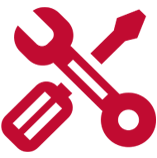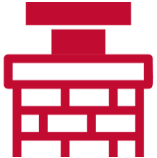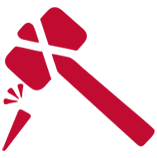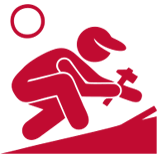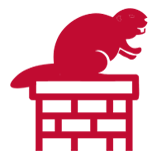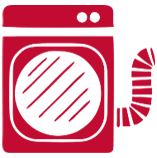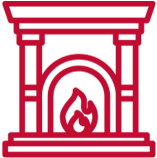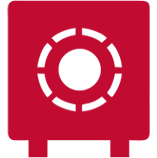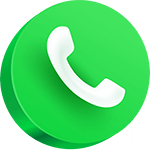Did you know that roughly 2.5 million American households rely on their wood-burning fireplace as their primary source of heat?
According to the NFPA, or National Fire Protection Association, heating equipment, including fireplaces, is the second leading cause of residential fires, right behind cooking accidents.
Fireplace safety is critical, and whether you’ve owned and enjoyed your wood-burning fireplace for years or recently purchased a house with a beautiful fireplace, there is always more to learn about fireplace safety.
At The Chimney Kings, we take fireplace safety very seriously and are here to handle any chimney repair or chimney inspection.
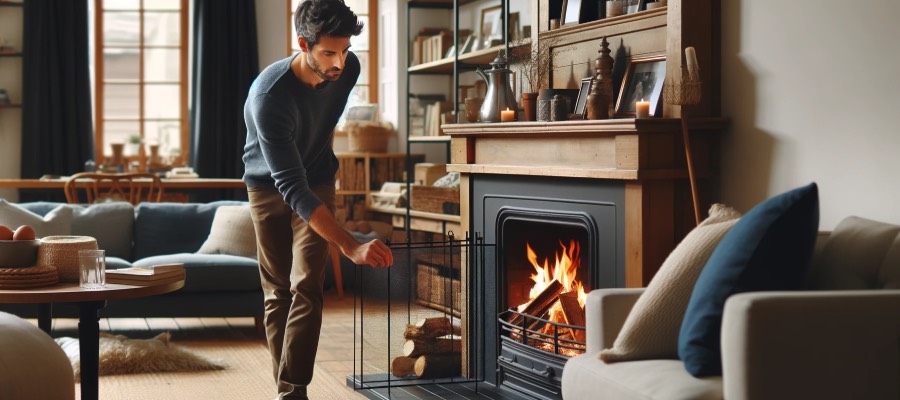
The Key to Keeping Your Family Safe: The Importance of Regular Wood Burning Fireplace Maintenance
Your magnificent wood-burning fireplace is the centerpiece of your living room, a supplemental heat source in winter, and the envy of all your friends and neighbors.
Unfortunately, what those same jealous loved ones don’t realize is the amount of work it requires to be a responsible fireplace owner.
Improper fireplace maintenance is not only a fire hazard; it can actually negatively impact the value of your home.
Proper fireplace safety starts with purchasing the right fireplace tools, including:
- Metal grate
- Metal or wire screen
- Broom and shovel
- Small metal container or garbage can to hold cold ashes
- Fire extinguisher
- Smoke and carbon monoxide detectors
Remember, it is critical to install at least one functioning smoke detector on each floor of the home and one near the fireplace.
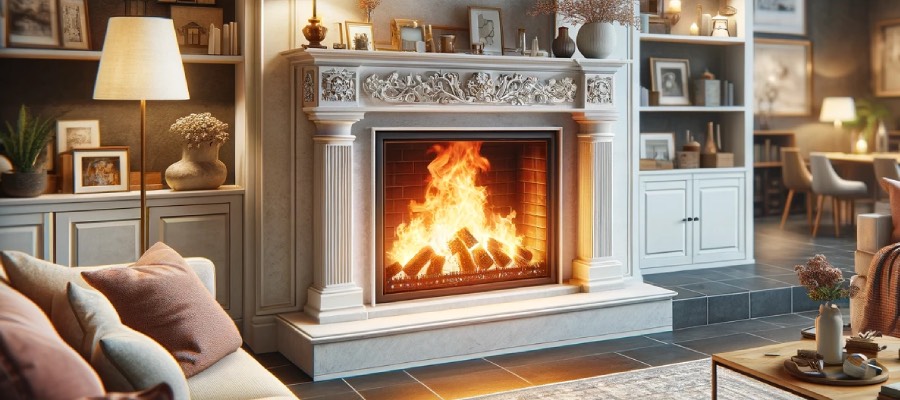
A Roaring Fire Is Cozy, But It Can Be Dangerous: Fireplace Safety Dos and Don’ts
Nothing compares to starting your morning fires during the colder months, especially when you factor in the money you will save on your monthly electric and natural gas bills.
Burning more fires means more smoke, more creosote, and more chances for disaster.
If you are supplementing your home’s heating equipment with a wood-burning fireplace or wood stove, there are several dos and don’ts you need to keep in mind.
 Don’t Walk Away From a Burning Fire
Don’t Walk Away From a Burning Fire
Never walk away from your fire, ever, even for a second, to check on the roast in the oven or to watch the kids play baseball in the backyard.
Leaving a fireplace unattended can quickly result in a fire that quickly burns out of control, even in the most well-maintained fireplace.
As a good rule, if you have a fire burning, ask a family member to stay in the room and keep an eye on the fire while you are away.
 Don’t Position Furniture Carelessly Near Your Wood-Burning Fireplace
Don’t Position Furniture Carelessly Near Your Wood-Burning Fireplace
Proper air movement is critical for your fire to burn brightly and efficiently.
This means that in addition to keeping your chimney free of debris, including soot, unwanted pests, and creosote buildup, you need to ensure that there are no obstructions near the firebox.
Keep your furniture, decorative items, electronics, and especially small children at least three to four feet away from the fireplace.
This not only allows for proper airflow but will ensure you don’t accidentally set your prized television or new sectional sofa on fire.
 Do Learn What Is Safe to Burn
Do Learn What Is Safe to Burn
If you have a wood-burning fireplace, you should only ever burn dry wood, including hard woods and soft woods, and dry seasoned wood.
Never, ever, under any circumstances should you burn anything else combustible, even if it seems safe, as it could result in more than just more soot and a little more smoke.
Here is a short list of just a few of the things you should never try to burn in your wood fireplace:
- Damp or wet firewood
- Dryer lint
- Driftwood
- Flammable materials other than seasoned wood
- Flammable liquids
- Other debris lying around the house – including your old cardboard boxes
 Do Schedule Your Annual Chimney Inspection Today
Do Schedule Your Annual Chimney Inspection Today
Contact a professional to have your Denver chimney inspected once a year.
The best time to hire an inspector and a professional chimney sweep is in the spring, especially if you use your fireplace throughout the winter.
In addition to performing regular maintenance and cleaning out soot buildup, that yearly inspection is critical for the safety and health of your fireplace.
The inspector will ensure the fireplace is tightly sealed, which will prevent smoke damage and noxious fumes from entering your home.
At The Chimney Kings, we can handle your yearly chimney cleaning – and so much more.
We can handle a simple roof repair, roof tarping, and brick tuckpointing.
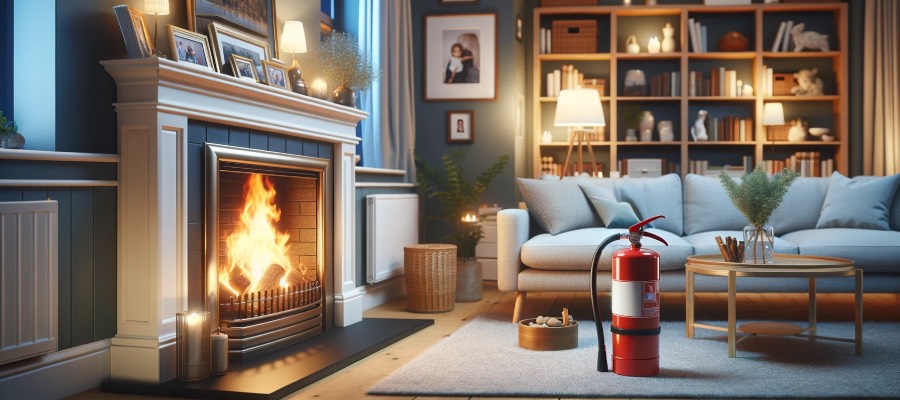
Keep Flammable Items Away From Your Fireplace, and Keep A Fire Extinguisher Handy
In addition to ensuring your furniture is at least three feet away, it is critical to keep any other flammable materials out of the way.
Don’t allow your kids to play with their toys right in front of the fireplace, even if it is inviting and the warmest spot in the house on a cold morning.
Store a fire extinguisher near the fireplace, keep an eye on its expiration date, and ensure it is easily accessible.
Remember, a house fire can ignite in the blink of an eye, and the last thing you want to do is search around for a hidden extinguisher.
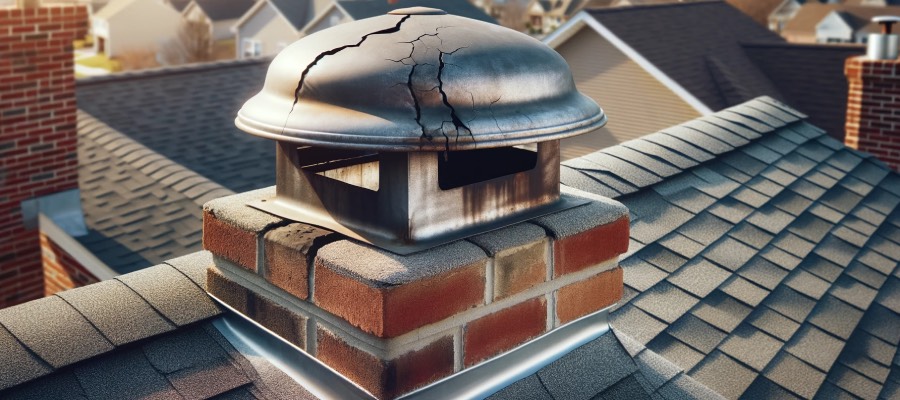
Signs It’s Time To Have Your Fireplace and Chimney Professionally Inspected
It is recommended you have your fireplace professionally cleaned and inspected once a year.
However, there are other instances when you should contact us for an immediate checkup, including:
 There Is a Noticeable Burning Smell When There Is No Fire
There Is a Noticeable Burning Smell When There Is No Fire
It’s not uncommon for your fireplace to faintly smell like a fireplace fire, even when there are no embers or you remove soot from the bottom of the box.
However, suppose there is a very noticeable smell of smoke or fire several hours or days after the last fire was lit.
In that case, it is time to call a professional immediately.
Severe creosote buildup can ignite, and the slow burn can fill your smoke with the smell of smoke.
 Damage to the Chimney, Chimney Cap, Damper, or Flue
Damage to the Chimney, Chimney Cap, Damper, or Flue
A yearly checkup can help prevent a minor problem from becoming severe damage.
Keep an eye out for damage between your inspections and contact a professional at the first sign of an issue.
Wondering what constitutes an emergency call?
Here are some reasons to contact your favorite chimney repair professional for an immediate fix:
- Leaking chimney flashing
- Damaged or cracked crown or cap
- Damage to the chimney lining
- Efflorescence – A white powder that occurs when moisture damages the masonry
- Severe soot buildup
Even something as simple as broken glass doors or a bent chimney cap requires immediate attention.
 Your Fireplace Simply Isn’t Working Properly
Your Fireplace Simply Isn’t Working Properly
Does your fireplace seem off?
Is there a lack of sufficient air flow going through the box and damper, or is a buildup of soot and creosote making it difficult or dangerous to light a fire?
Keeping your family and fireplace safe is a top priority, and if there are any concerns, no matter how minor, it is better to err on the side of caution by contacting a professional to have the fireplace cleaned, chimney cleaned, or a repair performed.
Do you require post-inspection emergency or routine fireplace repairs – We can help!
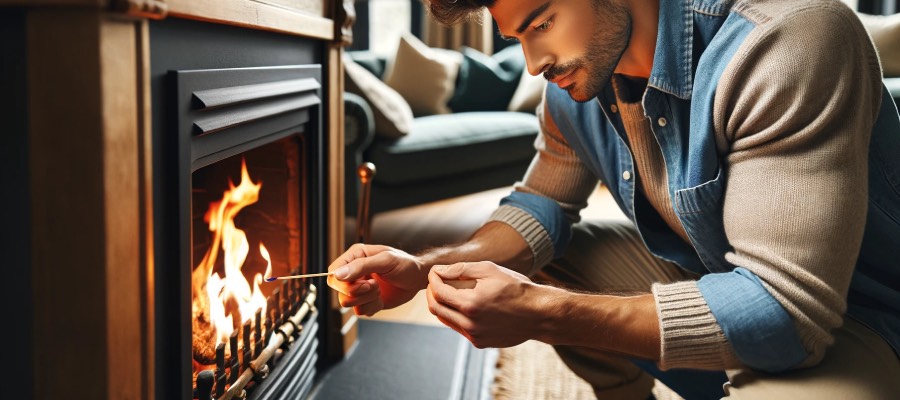
Close the Dampers When You Are Finished!
Starting a fire is all about following a routine.
You start by opening the fireplace damper before lighting a match and enjoying the warmth and glow of a roaring fire.
However, did you know it is just as important to close the damper once the fire is out?
- A closed damper in the summer prevents cool air from exiting the home.
- In winter, a closed damper prevents all your heat from escaping through the chimney.
Is your damper damaged, making it difficult to open and close – We can handle this repair and many others, including a firebox repair and chimney cap repair or replacement.
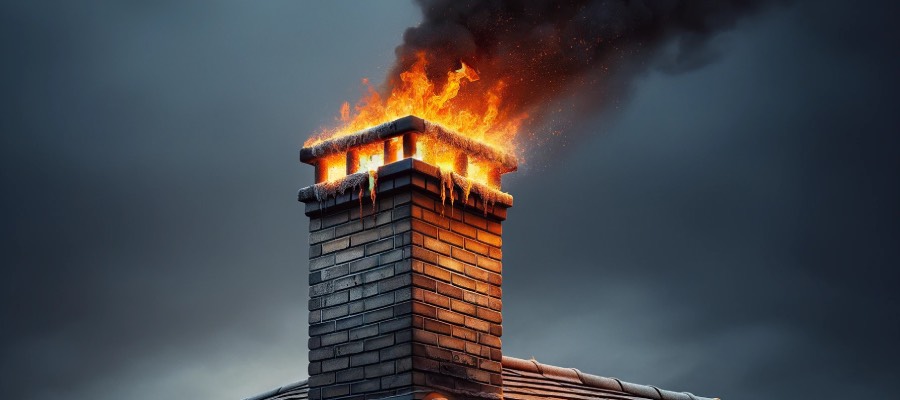
Four Leading Causes of Chimney Fires
Improper preparation of your firebox, chimney liner, and fireplace can lead to an unnecessary and potentially damaging chimney fire.
Here are the four leading causes of accidental chimney fires:
- Improper maintenance – Including skipping your yearly inspection
- Burning unseasoned or damp wood
- Using ignitors, such as gas
- Damaged and improperly sealed fireplaces
 The Dangers of Creosote Buildup
The Dangers of Creosote Buildup
That blacky, tar-like substance found on every inch of the inside of wood-burning chimneys is called creosote.
Because it is a naturally occurring by-product of burning wood, it will inevitably build up in your fireplace and on the chimney lining.
According to the CSIA, Chimney Safety Institute of America, creosote buildup is more common when homeowners burn unseasoned wood if the inside of the chimney is cooler than average and has restricted airflow.
In most cases, the buildup occurs in the upper portions of the chimney near the cap, meaning you often won’t know there is serious buildup until there is a problem.
Luckily, in addition to regular chimney cleanings, you can prevent creosote buildup in several ways, including burning certain types of wood, such as oak and maple, and avoiding overloading the fireplace box with wood.
 What is Carbon Monoxide?
What is Carbon Monoxide?
Carbon monoxide is a completely odorless, colorless gas that naturally forms when you do not thoroughly burn wood inside your fireplace.
When you start burning wood inside your enclosed fireplace, the oxygen required to keep the fire burning is replaced with carbon dioxide.
If the fire burns slowly and improperly due to a lack of oxygen (not enough air), carbon monoxide is produced and can quickly fill your home without a single sign of a problem.
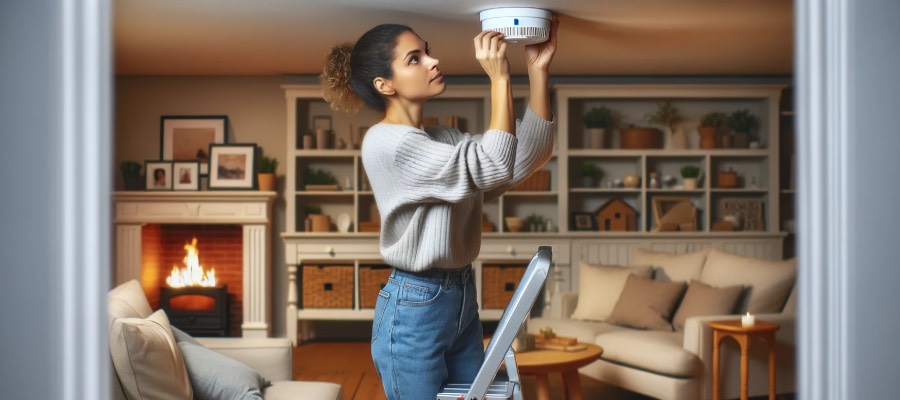
Why is Carbon Monoxide Dangerous? The Importance of Installing Several Carbon Monoxide Detectors
Unfortunately, because carbon monoxide is undetectable, it can seep into your home and lead to severe injury or even death in minutes.
When a person is exposed to high levels of carbon monoxide in their living space, blood cannot effectively transport oxygen to the vital organs.
Prevent carbon monoxide poisoning by encouraging proper airflow, ensure your wood burns smoothly and correctly, and install a detector near your fireplace.
As a rule, you should install at least two functional carbon monoxide detectors on every floor and one outside each bedroom.
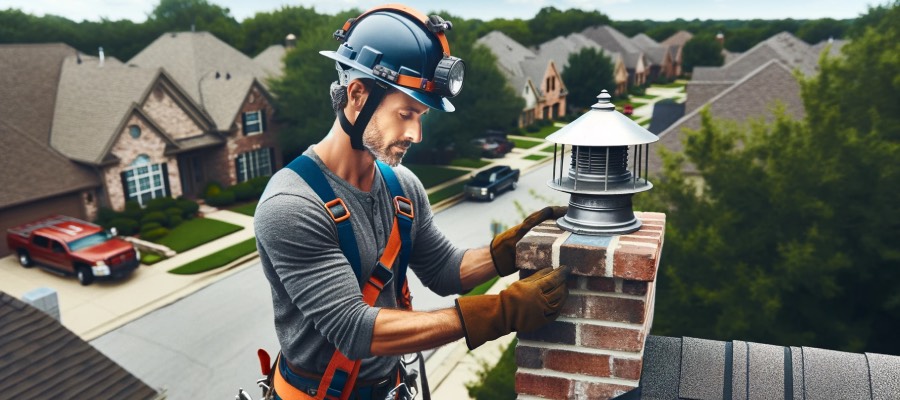
Our Customers Also Ask
How do I make sure my fireplace is safe?
Hire a Denver chimney sweep to clean your chimney yearly, and follow these simple tips:
- Never burn a fire for longer than five hours
- Keep a fire extinguisher nearby
- Never allow your kids to play near the fireplace
- Always ensure the fire is completely out before walking away
Not sure how to properly extinguish a fire in a wood fireplace, here’s how:
- Spread out the embers: Grab your fireplace poker and spread out the embers into an even mound. If the fire was large or burning for several hours, this might take several minutes.
- Bury the remaining wood and embers: With your fireplace shovel, bury the hot ash and embers with the cool ash. Continue until all the warm ash and embers are completely covered.
- Pro tip: Use baking soda: Sprinkle a hefty amount of baking soda over the flat mound of ash. The sodium bicarbonate will help ensure that any remaining embers are extinguished and is an inexpensive way to prevent an accidental home fire.
Watch the fire for several minutes to ensure it is entirely out.
Is it safe to leave a fireplace on at night?
Unless you plan on sitting up all night stoking the fire and attending to the flames, you should never allow your fire to burn unattended throughout the night.
Instead, use a supplemental heat source at night to maintain the temperature in your home.
How safe is a wood-burning fireplace?
When appropriately maintained, wood-burning fireplaces are very safe, attractive additions to the home and can even increase the value of your property!
Want to ensure your fireplace is well-maintained, elegant, and safe?
Learn about our services, including fireplace cleaning, chimney crown replacement, and repairs.
What can I do to keep animals out of my chimney?
At The Chimney Kings, we offer comprehensive animal removal services.
But we would rather you learn how to prevent critters from entering your fireplace! Here’s how:
- Check your firewood before bringing it into the house: Examine your firewood for any unwanted guests before bringing the bundle into your home.
- Install a new chimney cap: Replace your broken chimney cap immediately, or ask a pro about the best type of cap to prevent pests from entering your chimney.
- Eliminate entry points to your roof: Cut back overgrown trees, get rid of the trellis and vines on the side of your home, and make sure your gutters are clean.
- Keep an eye out for unwanted pests: Despite your best efforts, pests can still enter, and if this occurs, call us right away to eliminate those unwanted invaders!
What are the other causes of preventable house fires?
Leaving a fire unattended is just one of the leading causes of preventable fires in any home, but there are others, including:
- Cooking mishaps
- Smoking in the home
- Electrical fires
Lint accumulated in the dryer vents blocks airflow, leading to unintentional fires. Keep your family safe and your dryer working properly with regular dryer vent cleaning.


